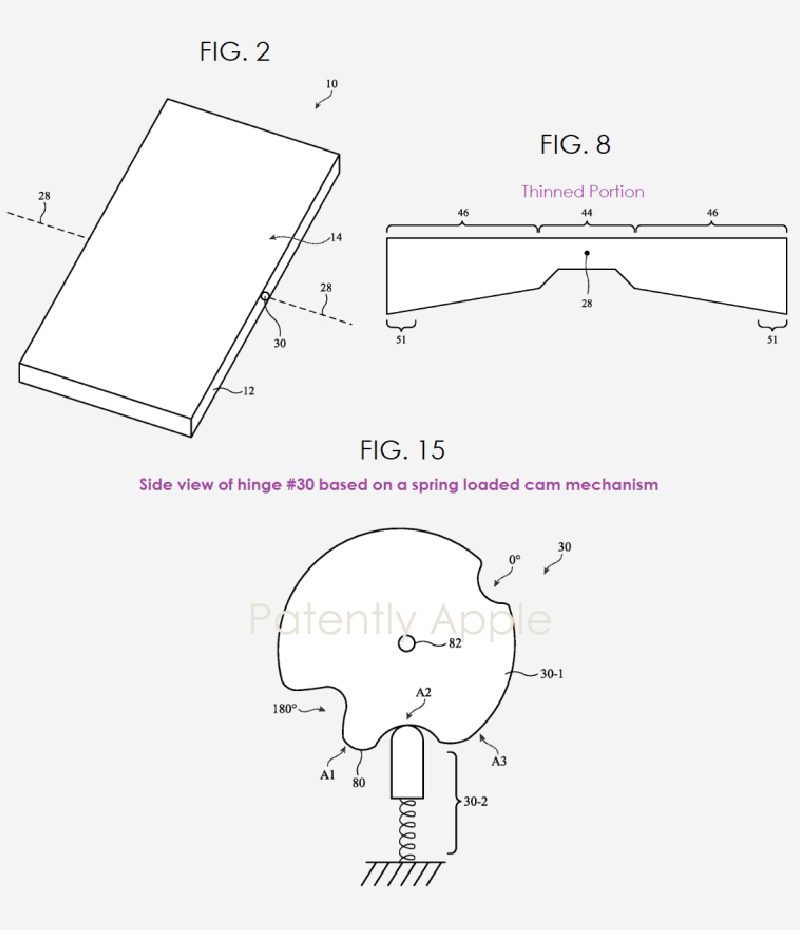In a bid to broaden its mobile industry, the American tech giant Apple is reported to have filed two patent applications for future foldable displays. As per the report, the duo’s future foldable displays are expected to be used in Apple’s future iPhone and/or iPad.
A publication made by the United States Patent and Trademark Office reveals that the tech giant has applied for two patents relating to “Durable foldable displays” and “Folding Displays Having Textured Flexible Areas.”
Durable Folding Displays
The first patent application relates to a possible future electronic device having a foldable housing with first and second portions of the display coupled to a hinge for rotation about a bend axis.
The foldable housing can accommodate a foldable display. A display cover layer and a flexible display panel may be present on the foldable display. A bend axis allows the foldable display to bend. An array of pixels on the display panel may be configured to display an image through the display cover layer.

A glass layer could be used to form the display cover layer. A recess in the layer of glass that extends along the bend axis can be formed. The recess may form a flexible, locally thinned portion of the glass layer, allowing the glass layer to bend about the bend axis.
Corner and other edge portions of the display cover layer may have increased thickness relative to other portions outside of the locally thinned portion to ensure satisfactory impact resistance during drop events.
When the electronic device is jolted during a drop event, the hinge and/or other structures in the display may be configured to help hold the display flat when unfolded during normal use while causing the display to slightly fold the bend axis. This helps to keep the display from collapsing when fully opened.
Foldable Displays With Textured Flexible Areas
On the other hand, the second relates to electronic devices with foldable displays having textured flexible areas where the display cover layer could be made of glass. In the layer of glass that runs parallel to the bend axis while overlapping the bend axis, an elongated groove or other recess may be formed.
The recess may form a flexible, locally thinned portion in the glass layer. This thinned portion allows the display cover layer to bend as the foldable device is opened and closed. The polymer may be placed in the recess to help planarize the inner side of the display cover layer adjacent to the display panel.
The inner surface of the thinned portion of the display cover may be roughened to promote wetting and adhesion of the polymer in the recess and to help reduce reflections. Follow TechGenyz for more updates.




